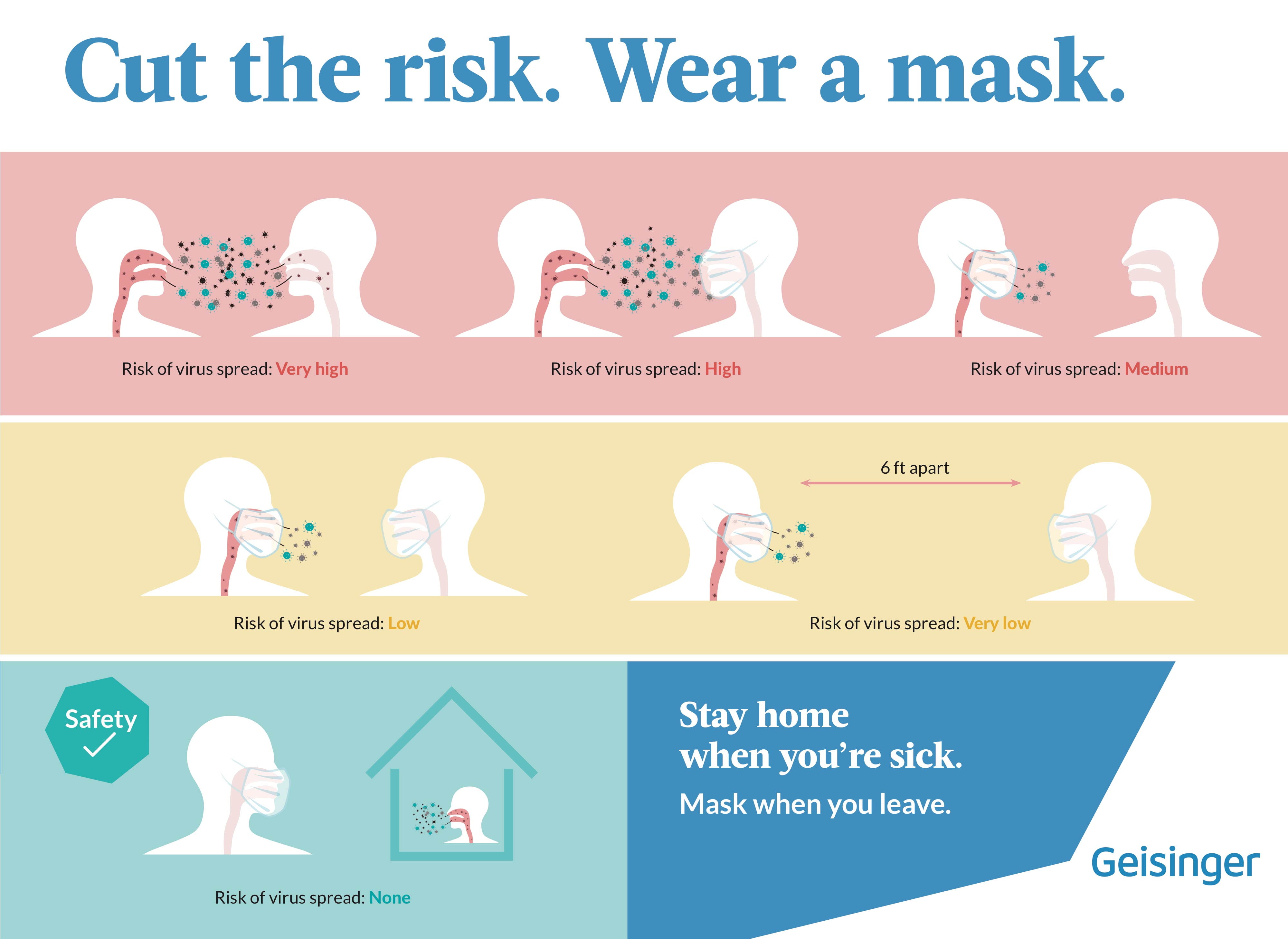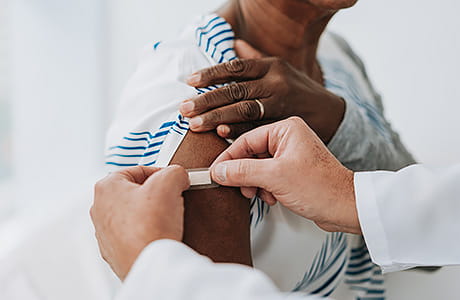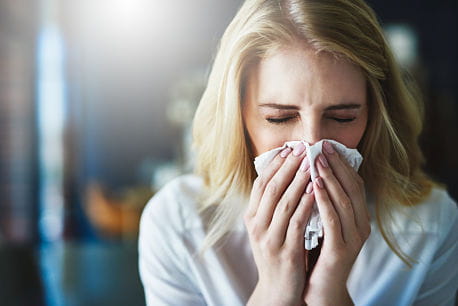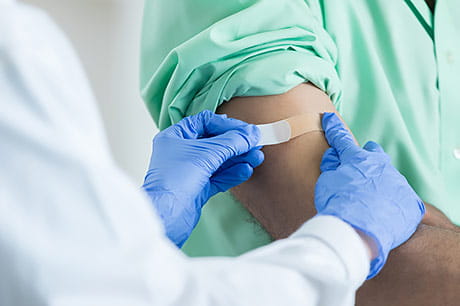The science of saliva: Why wearing a face mask matters
Take a journey through the germs of a person infected with COVID
Maybe it starts with a dry cough, then progresses to something a little more substantial. Add a sneeze or two. “Ah, it’s just allergies,” you tell yourself.
But what if it isn’t allergies or a slight bug? What if you have actually have COVID-19 —but you just don’t know it because your symptoms haven’t started yet? Or, maybe you’re infected but asymptomatic — you have no symptoms. It’s not only entirely possible, it’s extremely plausible.
Such is the case with my gracious yet unassuming host: a person infected with the COVID-19 virus who is asymptomatic. Because he feels fine, he doesn’t think he needs to wear a face mask.
But first, let me introduce myself — I’m the germs inside his body.
What happens when I leave the body?
These days, thanks to the coronavirus pandemic, I’ve become a household name: respiratory droplets. But what I really am are tiny, liquid droplets made of saliva or mucus that come out of your mouth and nose when you talk, laugh, cough, sing and breathe.
I come in many shapes and sizes. I can be sent hurtling through the air when you speak, especially using words with forceful-sounding letters (like “b” and “p”). I can be released through a giggle, a gasp or a guffaw. I can be in a cough that’s light or severe, long or short, forced or suppressed.
Regardless of the form I take, the same thing happens almost every time. When my host sets me free with a cough, I’m launched like a rocket in a split second, spraying up to 3,000 droplets of my closest salivary friends with each instance.
And with a sneeze, as many as 40,000 droplets are catapulted into the world. My spray comes out in such a fine mist, most of the time it’s not even visible to the human eye.
How fast do I go?
One simple cough or abrupt release from my host, and I’m projected into the world at 50 miles per hour. My larger, heavier droplets plummet toward Earth (or asphalt or whatever’s around), coating everything nearby in an invisible veil of germs.
And I mean everything. Any surface, whether it’s a countertop, ATM machine, cell phone, door handle or a piece of paper. I can sit on most surfaces for hours, spreading the virus even while I’m just loafing around — in fact, on steel or plastic, I can survive for days.
How far do I go?
My heavier droplets (like the ones we just talked about) typically travel about 3 feet, but some can travel up to about 6 feet.
But let’s talk about my lighter, microscopic droplets — the ones that you release when you talk, laugh, sing or breathe. They can travel even farther and hang in the air for hours — especially if you’re in a crowded indoor place or somewhere with poor ventilation.
How do I spread from one person to the next?
The Centers for Disease Control and Prevention says that the respiratory spread of COVID-19 typically happens when people are within 6 feet of each other. So, when my host talks, laughs, sings, coughs, sneezes (or just breathes) within 6 feet of someone, he’s potentially exposed them to the COVID-19 virus — because he’s not wearing a face mask.
Because COVID-19 is still so new, scientists and doctors don’t yet know how much of its spread is caused by the virus traveling in the air for distances of more than 6 feet.
But we do know that people who are asymptomatic (meaning they don’t have symptoms but are infected) or presymptomatic (meaning they are infected but haven’t developed symptoms yet) can still shed the coronavirus and infect others.
Many factors affect how contagious each person’s virus is, including how sick they actually are (even if they are asymptomatic or presymptomatic) and how long they’ve been infected.
So if you only stay home when you feel sick, that’s fine with me. I’ll just go ahead and spread before you feel sick, as long as you don’t put on a face mask to keep me contained.
How does wearing a mask protect against germs like me?
Here’s the part I’d rather not tell you: When worn correctly (covering both your mouth and your nose), a face mask will block the germs that come out of your mouth and nose whenever you talk, laugh, sing, cough, sneeze and breathe.
That means that if you have COVID-19 and don’t know it (which is the case for many people), you’ll help prevent others from getting it. A face mask will also help protect you from getting sick in the first place.
You’ll protect everyone around you from sickness and germs like me — including those who won’t just get sick from COVID-19, but who are more likely to die from it: people who are 60 or older, people with cancer, people with weaker immune systems and even people with diabetes.
Surely, you know someone in one of these categories.
Surely, you wouldn’t (knowingly) put their life at risk.
And surely, you wouldn’t want anyone else to either — especially when such a simple thing as wearing a face mask could protect against sickness and save someone’s life.
Hey, even I’m not that inconsiderate.
Reviewed by Dr. Stanley Martin, director of infectious diseases at Geisinger
Next steps:
Face masks: Know your options
Is social distancing still important?


Telemedicine video visits
See your doctor from the comfort of home — from routine care to specialty care
Get virtual care nowCOVID-19 updates: Visit Geisinger's Coronavirus Resource Center for the latest information and helpful resources.




